Fossil-fuel energy
Fossil-fuel energies including oil, coal or natural gas are said to be formed from the fossilized remains of dead ancient animals or plants, which were exposed to high temperature and high pressure and deposited over from several thousands to millions of years, according to organic theory.
Oil & Natural gas (organic origins)

1.
Dead land plants and sea creatures are deposited on the seabed.
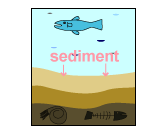
2.
Mud and sand are accumulated on old remains over the years.
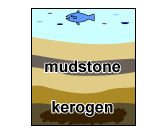
3.
Kerogen, the origin of oil is made from organic remains in due course.
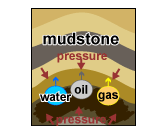
4.
Kerogen is broken down into oil and gas and penetrate upward by geothermal heat and the pressure in the layers.
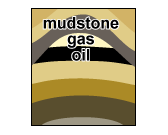
5.
Oil and gas are collected under a layer of mudstone (cap rock) which does not let oil and gas penetrate.
Coal

1.
Dead plants pile up in the bottom of sea or lakes.

2.
Mud and sand are accumulated on dead plants over the years.
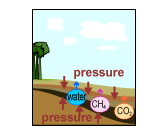
3.
By geothermal heat and the pressure in the layers, the dead plants are degraded and hydrogen and oxygen slip out in forms of water/CH4/CO2 for carbonization.
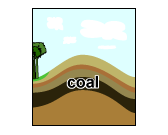
4.
The further carbonization makes oxygen content reduced and carbon content increased.
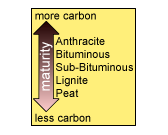
5.
Coal are classified into six by carbon concentration (coalification).
Different types of coal also have different uses.
Lignite
Lignite is a coal with low degree of coalification. Moisture content is high and energy content is low. As lignite is prone to ignite spontaneously in dried conditions and not suited for long-distant transport and storage, most of it is consumed in mining sites.
Annual production of lignite
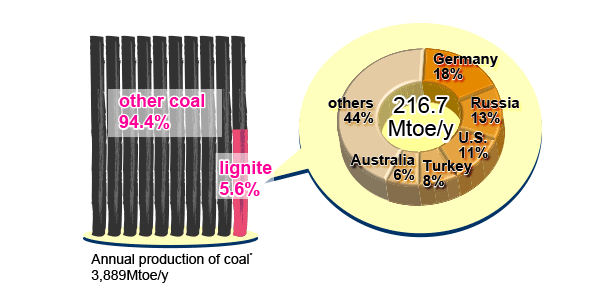
Source: Prepared by RITE, based on 'IEA Energy Balances 2012 OECD and Non-OECD Countries'
*Coal includes anthracite, bituminous, sub-bituminous and lignite








